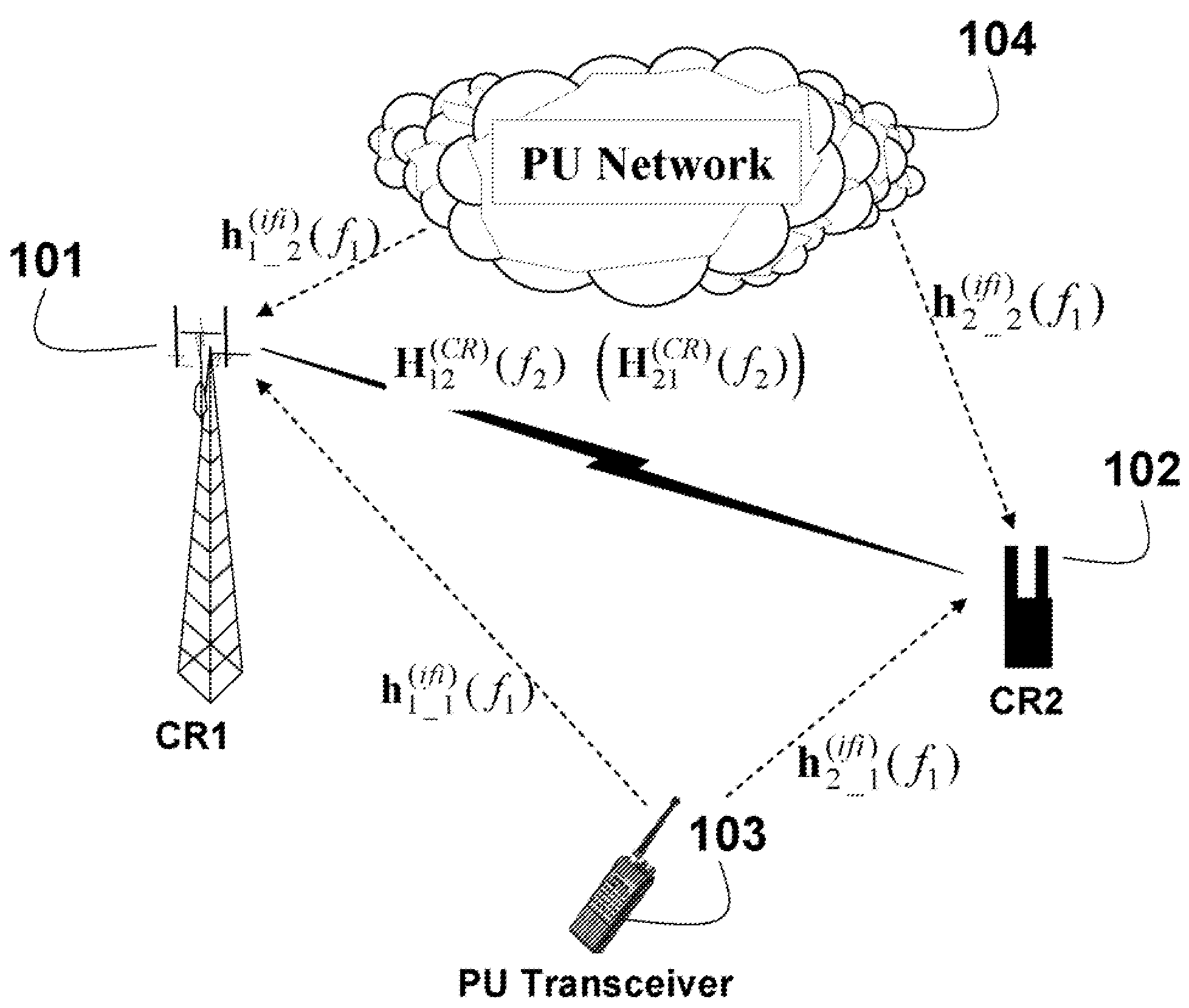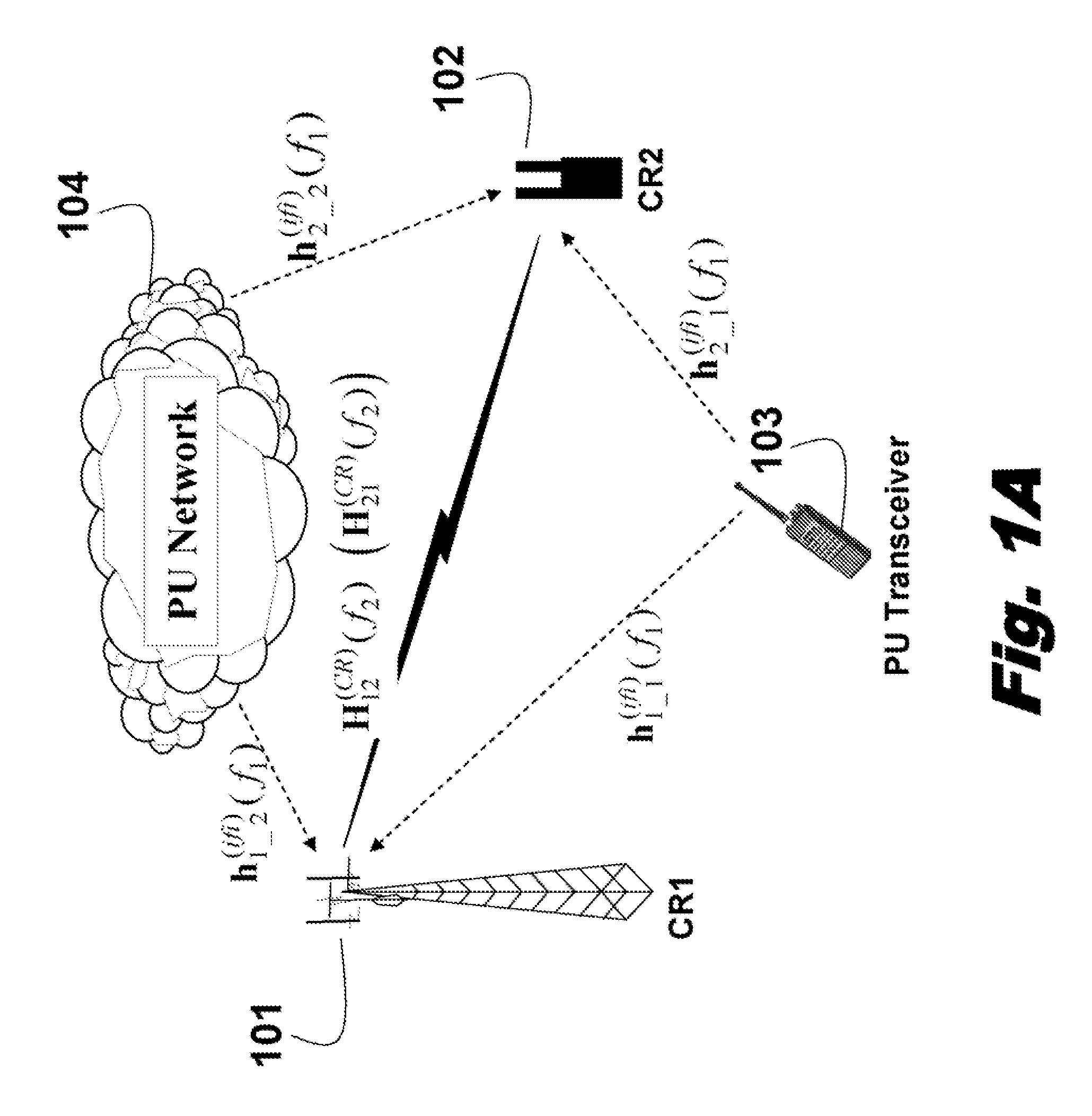Space-time-frequency sensing of RF spectrum in cognitive radios
a cognitive radio and space-time frequency technology, applied in the field of spectrum sensing techniques in cognitive radio (cr) communications systems, can solve problems such as the existence of pushes
- Summary
- Abstract
- Description
- Claims
- Application Information
AI Technical Summary
Benefits of technology
Problems solved by technology
Method used
Image
Examples
Embodiment Construction
[0013]CR Network
[0014]FIG. 1A shows radio networks in which the embodiments of our invention operates. The task is to detect unused frequency bands (“spectrum holes”401 in FIG. 4). The unused frequency bands can then be assigned as available frequency bands for a cognitive radio.
[0015]More specifically, we desire to detect the unused frequency bands using cognitive radios equipped with antenna arrays. As defined herein, an antenna array includes multiple antenna elements that can be individually controller over space, time and frequency dimensions.
[0016]The networks include a primary user (PU) network 104 and a PU transceiver 103, and secondary users (CR) 101-102. The PUs and CRs are located so that their signals can interfere with each other. As shown, the communication links do not need to be in the form of direct propagations, i.e., line-of-sight (LOS) connections. The embodiments of our invention can be applied to any scattering / fading environment.
[0017]As shown in FIG. 1A, two ...
PUM
 Login to View More
Login to View More Abstract
Description
Claims
Application Information
 Login to View More
Login to View More - R&D
- Intellectual Property
- Life Sciences
- Materials
- Tech Scout
- Unparalleled Data Quality
- Higher Quality Content
- 60% Fewer Hallucinations
Browse by: Latest US Patents, China's latest patents, Technical Efficacy Thesaurus, Application Domain, Technology Topic, Popular Technical Reports.
© 2025 PatSnap. All rights reserved.Legal|Privacy policy|Modern Slavery Act Transparency Statement|Sitemap|About US| Contact US: help@patsnap.com



